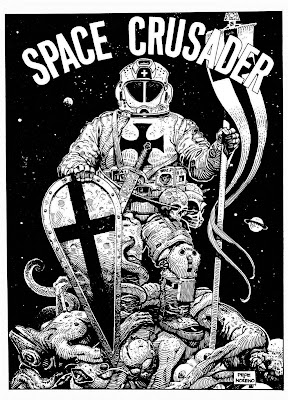The May, 1978 issue of Heavy Metal featured a striking front cover by Philippe Druillet, and a back cover by Tom Barber.
Along with installments of 'Airtight Garage', 'Barbarella', '1996', 'Urm', and 'Orion', there is an advertisement for science fiction / fantasy art books, primarily works by Roger Dean, and the newly launched 'Ariel: The Book of Fantasy'. Patrick Woodroffe's 'Mythopoeikon' was perhaps the best in the lot.
Among a number of good-quality, shorter strips was a three-pager by Sergio Macedo, titled 'An Image'.









































































